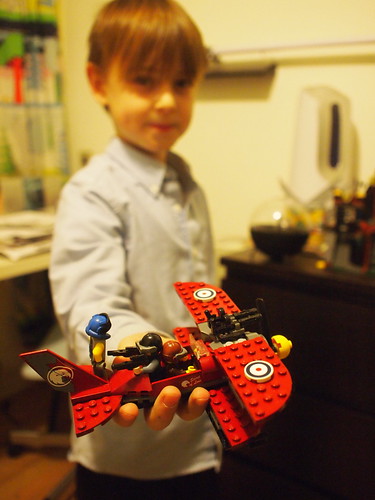Building on LEGO’s systematic creativity

After reading through the LEGO’s research paper, Defining Systematic Creativity in the Digital Realm, we have gained a number of insights… LEGO offers what the company calls “systematic creativity”—a combination of logical/systematic play and imaginative/creative play. LEGO believes this is what makes their product unique and effective in allowing children to learn while playing.
To support systematic creativity, a toy must afford 2 things:
1) A logical set of constraints that are easy to understand and master.
2) A collection of interlocking parts.
LEGO toys offer these two things but many other toys do not.
Now, consider that our world is full of “stuff”: old & new toys, recycled materials, found objects, scrap, worn out appliances and other low-cost, highly available materials. This “stuff” has the potential to be used to make all kinds of new creations. An old CD player, for example, can be taken apart and the motor and batteries used to make a new, moving creature (example). Simple (and inexpensive) cardboard and pushpins can combine to make a moving sculpture (see example).
However, if children only see the CD player as a whole, and not the parts inside, how can they use the parts of the CD player to make something new? If they are just given a pile of cardboard and pushpins with no “logical set of constraints” they may be intimidated by the question of what to build.
If we can design a system that applies these two affordances of LEGO’s to everyday stuff, the world could become a collection of “LEGO” parts from which children can build!



































































































































































































































